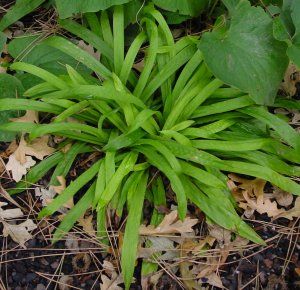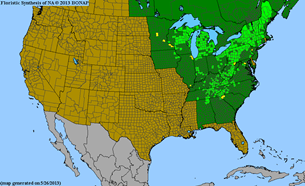
Carex plantaginea
seersucker sedge
Shiny deep green leaves are unusually broad (to 1 1/8") and puckered like Christmas ribbon. An excellent, mostly evergreen (the basal foliage overwinters) groundcover for average to moist shade, provides unique texture. Flowers occur in early to mid-spring, thin and black-tipped, not especially showy. Found in moist woods from Canada to Alabama.
| SIZE | |
|---|---|
| Carex plantaginea LP32 - 32 per flat | Availability |
Height8-10 Inches |
Spread10-12 Inches |
Spacing10 Inches |
Bloom ColorGreen |
USDA Hardiness Zone 4-8 |
seersucker sedge Interesting Notes
Unlike other woodland sedges, Carex plantaginea has bold textural contrast with broad shiny deep green leaves that are puckered like ribbon. Growing about 6-12” tall and 12” wide, seersucker sedge grows well in dry shade, making it a wonderful clumping groundcover and problem solver. The almost-evergreen foliage is a constant in the landscape with light purple-brown flowers arriving in early spring.
Carex plantaginea grows in rich deciduous forests in the eastern United States up to Canada. While it excels in moist shaded sites in calcareous soils, it can adapt to difficult dry shaded sites quite well. Seersucker sedge does well in light to medium shade in the garden and should be cut back in late winter to maintain its bright appearance.
The trial gardens have a few difficult dry shade locations and we love to experiment to see which Carex spp performs the best. In an area beneath a spruce tree, we have a mixed planting of Carex plantaginea, Carex pensylvanica, Carex platyphylla and Heuchera americana ‘Dale’s Strain’ and love the way seersucker sedge contrasts with the running Carex pensylvanica and the mottled color of the Heuchera in the fall. A great forage for local wild birds and insects, sedges are a true workhorse in the garden.
Carex plantaginea Growing and Maintenance Tips
Grows well in part or full shade in moist to average soil. Tolerates a dry shady site, but will not spread as freely.
Key Characteristics & Attributes







Additional Information
|
Soil Moisture Needs
|
Green Infrastructure
|
Plug Type
|
Attributes
|
||||||||||||
|
Propagation Type
|
Grass Type
|











